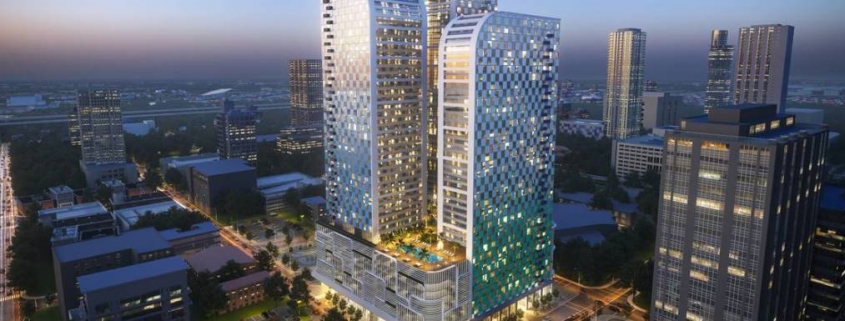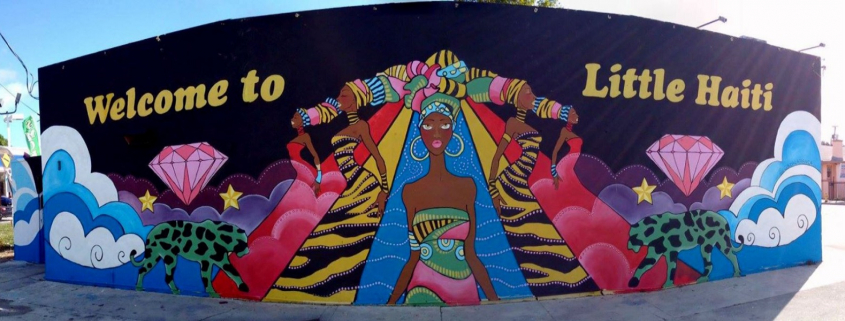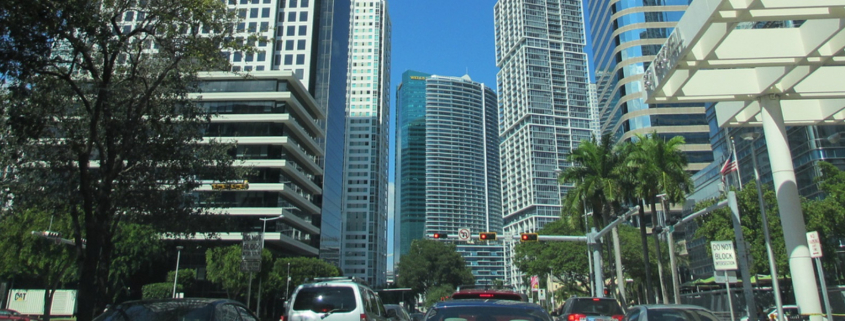The Miami City Commission is considering changes to the zoning code to establish regulations regarding co-living. If adopted, the amendment will allow for communal living developments to rise in Miami’s bustling central business district, health district and Wynwood.
Posts
Three towers, between 39 stories and 48 stories, would sit on top of a new public parking garage with 1,350 spaces and retail on the ground floor.
A large chunk of prime development land in downtown Miami could soon be put up for bid by the Miami-Dade School Board – and developers could build a mega-project there, according to the Herald.
The property has the potential to become “a new Brickell City Centre,” according to an official with the Omni CRA, an agency that is working with the School Board.
The School Board could eventually offer up to 10 acres to developers in a ground lease with the proceeds to fund education, as part of a “21-acre vision.”
Already, a deal is in place with Crescent Heights for an acre of land which the developer will combine with adjacent property to build twin 60-story towers with parking, residential, and offices for the School Board.
If the School Board does put its property out to bid, it could generate taxes for the CRA that would fund several now projects each with hundreds of affordable housing units.
A new building would be constructed for iPrep Academy at Northeast 19th Street, on city property next to the City Cemetery. School Board funding would pay for the school, with CRA funding for hundreds of elderly affordable housing on top.
Another project would be the rebuild of Phillis Wheatley Elementary near Overtown and Wynwood. Hundreds of affordbale housing units would also be built on top.
A School Board meeting is scheduled on whether to move forward with a possible deal. An Omni CRA presentation is also scheduled and open to the public.
Source: The Next Miami
The Little Haiti area will be South Florida’s hottest residential neighborhood in 2017, even as the wider region cools down, according to a recent report released by real estate website Zillow.
The company predicts home values in the gentrifying area north of downtown Miami will rise 4.6 percent this year. (Zillow included Little River, Buena Vista and the area around the Design District — together once known as Lemon City — in its analysis.) That’s the fastest rate in Miami-Dade, Broward and Palm Beach counties. But South Florida as a whole will grow at a 1.6 percent clip, Zillow said. Miami’s growth rate puts it at number 90 of the country’s 96 largest metro areas, according to Zillow projections.
Little Haiti, ‘The Next Wynwood’
With Brickell and the Beach overbuilt, developers are now zeroing in on under-valued neighborhoods close to the urban core.
“This could be the next Wynwood” is the mantra of many investors and home flippers crowding into Little Haiti. The average home there is valued at $191,500, up 19.6 percent over the last year, according to Zillow.
Just south of the booming neighborhood, the Archdiocese of Miami wants to sell the 15-acre campus of Archbishop Curley-Notre Dame High School in Buena Vista. Developers have also unveiled plans for large, mixed-use projects. And restaurants and commercial business are moving in, too, most recently Entercom Communications, one of the country’s biggest radio broadcasters, which signed a lease in Little River.
Some business owners and residents are worried they could be forced out by the wave of cash, and that Little Haiti’s unique cultural heritage is under siege. In March, with the support of many Haitian Americans, the city of Miami officially recognized the area roughly between 54th Street and 79th Street, and Northwest Sixth Avenue and Northeast Second Avenue, as Little Haiti.
Zillow predicts the other top neighborhoods in South Florida in 2017 will be the 441 corridor in Hollywood (the residential area south of the Seminole Hard Rock Hotel & Casino); South Middle River in Fort Lauderdale; Highland Garden in Hollywood; and Liberty City in Miami.
South Florida Slowdown
The overall slowdown in South Florida might come as a surprise after years of big gains. Fueled by foreign investment, real estate in Miami Beach, Brickell and other high-rise havens recovered quickly after the housing bubble burst, leaving less fashionable. But now that a strong dollar has cooled the condo market, overall growth is plummeting compared to other major metro areas.
“We’re expecting a drastic slowdown,” said Svenja Gudell, chief economist at Zillow. “Miami was the one market where I was starting to get concerned about a bubble because of the foreign investment flowing in and prices becoming so unaffordable. … A slowdown is actually a good thing because it could allow incomes to catch up.”
The volume of home sales in Miami-Dade fell by double digits in three of the four months leading up to November’s presidential election. Zillow also found that Miami has a higher unemployment rate and slower projected wage growth than other big cities. Recession in Latin America prevented Miami’s economy from booming at the rapid clip experienced in other parts of Florida and the Southeast in 2016.
The metro areas projected to experience the biggest increases in home values this year are Nashville, Tennessee; Seattle; Provo, Utah; Orlando; and Salt Lake City.
Source: Miami Herald
It’s the newest residential development to go vertical in Downtown Miami—and it tackles two of the biggest challenges in the city’s recovering housing market.
Brickell View Terrace addresses the lack of market-rate rental apartments and the shortage of affordable housing options within the urban core. The multifamily tower is a joint venture between Pinnacle Housing Group and East Little Havana Community Development Corporation. Located at 940 Southwest 1st Avenue, the 23-story apartment building will combine 76 traditional multifamily units and 100 affordable housing units within a single building.
The project marks the first mixed-income multifamily building to be developed in Miami. Miami, ranked as the nation’s least affordable major city according to the Center for Housing Policy, becomes the latest US market to adopt the mixed-income model, which has proven effective in cities from New York to San Francisco.
“Just as Miami’s luxury condo market garners headlines around the world, there’s a growing need for safe, affordable, well-located places to live,” says Mitchell Friedman, partner with Pinnacle. “Brickell View Terrace will offer residents all the conveniences of urban living within close proximity of public transportation links and Miami’s major employment hubs.”
Set for completion in late 2015, the construction of Brickell View Terrace is getting under way just as an amendment to the City’s Miami 21 zoning code passes. The amendment aims to encourage residential development combining market-rate and affordable units.
“The strongest urban cores in the nation are home to a healthy mix of housing types catering to residents from all points of the economic spectrum,” says Pinnacle partner David O. Deutch. “With funding for traditional affordable housing development in Florida becoming increasingly scarce, mixed-income projects are a viable method for meeting demand and getting worthy projects built.”
Brickell View Terrace will offer community rooms, a cyber cafe, two fitness centers, and a picnic area with outdoor game tables, car care area, electric car charging stations, and a park with gazebo. The multifamily project is next to Miami’s Brickell Metro Rail Station, just west of Mary Brickell Village on Southwest 1st Avenue between Southwest 9th street and Southwest 10th Street. Brickell View Terrace will offer one-, two- and three-bedroom apartments.
Source: GlobeSt
About Us
Ven-American Real Estate, Inc. established in 1991, is a full service commercial and residential real estate firm offering brokerage and property management services.
Subscribe
Contact Us
Ven-American Real Estate, Inc.
2401 SW 145th Avenue, Ste 407
Miramar, FL 33027
Brokerage & Property Management Services
Phone: 305-858-1188







